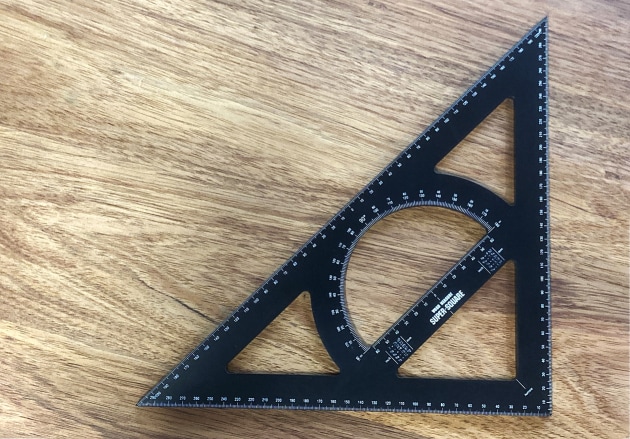REVIEW: Wood Measure Super-Square
Reviewed by Robert Howard
Sometimes you don’t realise how handy a tool could be until you have one. I have had the predecessor to this square for a few years now and have been surprised how often I have reached for it.
So why would I use this one? There are two important reasons (or differences). First, it has two long edges instead of one and a half. Provided the square is, well, square, this gives a more accurate reading without risk of a parallax error. And two, this is even more likely because this square has two long edges, instead of one (and a half).
I was initially disappointed that the edges of this latest square were not beveled, as they had been on its predecessor. However, I quickly discovered that once again, this had some real advantages. First, the square could sit upright without being held, which was not possible with the beveled edges. This meant I didn’t need a third hand, as is too often the case with, for example, some tricky assemblies and glue-ups. Second, I discovered it no longer was able to slip wholly or partially under the rip fence or crosscut fence of my tablesaw.
There is, of course, a disadvantage to the square edges: it is not so easy to use the square for taking measurements unless you can position it with the square edge against the wood being measured. This assumes, of course, that the square is accurate. First, I checked it for square, and am satisfied that it is close enough for any error to be undetectable by any method available to me (I checked it against all my existing squares, and by the method of making a knife cut across a board and then flipping the square 180° to check the alignment with the cut).
I then looked at the etched dimensions, and compared them with my 40 year old Starrett metre rule. That showed them to be within one third of a millimetre over 400mm. I will leave it to you to decide whether that is good enough for your purposes or not.
One very useful scale is the one on the long diagonal of the square: it is a centre scale, with the zeros in the middle and the measurements reading off in each direction towards the corners. Also etched onto the top surface are two conversion scales, which all up give the metric equivalents for 1/16, 1/8, ¼, 5/16, 3/8, 1/2, 5/8, 3/4, 7/8 and 1 inch. Finally, to round out the usefulness of the square, it also incorporates, as you can see in the photo, a handy protractor.
Review tool supplied by Wood Measure



